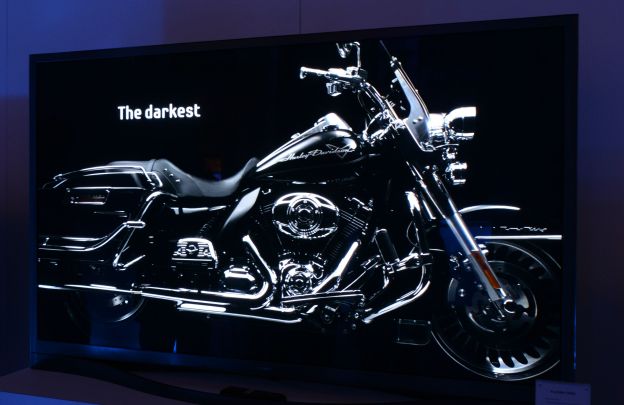 Check out our full review of the Samsung PN60F8500 plasma television.
Check out our full review of the Samsung PN60F8500 plasma television.
Today in New York City, Samsung officially unveiled its new line of plasma televisions. Among the new models is the top-of-the-line F8500 series, which we first saw in a private meeting with Samsung at CES 2013. At the time, some of the details surrounding the set were strictly hush-hush. It’s been a hard secret to keep, too, because, as one of Samsung’s reps commented that day, “We think we might have the plasma that could finally knock the Kuro off its perch.” Strong words, indeed. But were they justified?
For those not familiar, “Kuro” refers to Pioneer Electronics’ Kuro Elite TV – long hailed as the TV with the best picture quality ever produced since the invention of television. The best of the best was the Elite PRO-111FD, which debuted in 2008. You read that right – TV nerds are still buzzing about a five-year-old TV.
Since then, journalists and videophiles alike have speculated the arrival of a “Kuro killer” – a TV that would best the best of the best. In 2009, some thought the Panasonic VX100U might be it. In 2010 it was Panasonic’s VT20. And in 2011, we thought Sharp’s partnership with Pioneer on the Elite Pro series might have had the right stuff, but none of those TVs managed to steal the Kuro’s glory. Since then, others have been named as potential contenders, but none has managed to kick King Kuro from his throne. So what makes Samsung think it finally has “the one?”
For one thing, Samsung claims it has achieved its best black levels yet, and we’re inclined to agree. This year, Samsung has incorporated what it calls “Real Black Pro” into its top plasmas. This is essentially a filter comprised of particles that keep ambient light that enters the panel from being reflected back out. This makes the TV look blacker than most plasmas do when turned off, and it clearly aids the TVs picture quality while it is turned on as well. Deep, dark black levels are instrumental in creating an engaging picture with eye-popping color, depth of field, shadow details and contrast. The more a TV’s blacks tend toward grey, the less impressive the picture will appear, and the less effective bright images will be.
The other feather in Samsung’s plasma cap this year is the F8500’s brightness. We’d be willing to bet that the F8500 series is the brightest plasma made to date. Granted, our evaluation is purely subjective, but we’ve simply never seen a plasma quite that bright before, and certainly not paired with black levels so low.
The Kuro was not a particularly bright TV, so you’d usually find them in darkened rooms and basements where ambient light wouldn’t be an issue. That’s fine for dedicated home theater spaces, but what about the rest of us who want to put our TVs in, you know, the living room, with windows around and stuff? Also, because the Kuro wasn’t particularly bright, its contrast wasn’t all that spectacular, so the F8500 may have the Kuro there, too. Add all that up, throw in much more approachable price points than the Kuro offered (The F8500 series runs $2,200 for the 51-inch, $3,200 for the 60-inch and $3,700 for the 64-inch) and we feel pretty safe in saying that the F8500 does a good job of putting the Kuro’s legacy to rest.
We know others will disagree with us on that point. Until it can be proven with objective measurements that the F8500 (or Panasonics ZT60 plasma, for that matter) is capable of zero black-level in the same way the Kuro was, the old, crusty, beast of a box will somehow continue to be revered as the best TV of all time, never mind all the convenience issues, inferior contrast, lack of Smart TV capability, lack of 3D ability, and so on.
Aside from potentially killing the Kuro, we must consider whether Samsung may also be driving the final nail into Panasonic’s coffin as well. Earlier this week, we reported that Panasonic may have to quit the TV business entirely. Though Panasonic has consistently produced some of the best-rated plasma TVs for the last several years, the company is struggling financially – big time. Panasonic will reportedly sell off its healthcare division to shore up its sinking finances – ostensibly to help rescue its TV division – but many doubt the tactic will work. Now that Samsung is coming to the table with the kind of plasma TV that will likely win the hearts of those who see it, it is difficult not to foresee Panasonic’s ultimate fall, with Samsung swooping in to snatch up the plasma fans left in the wake.
We can’t speculate as to whether the timing of the F8500’s arrival was strategic, but Samsung couldn’t have planned it any better.
Check out our video below where we talk about Samsung’s advances in plasma with Steve Panosian, Director of Marketing at Samsung.



